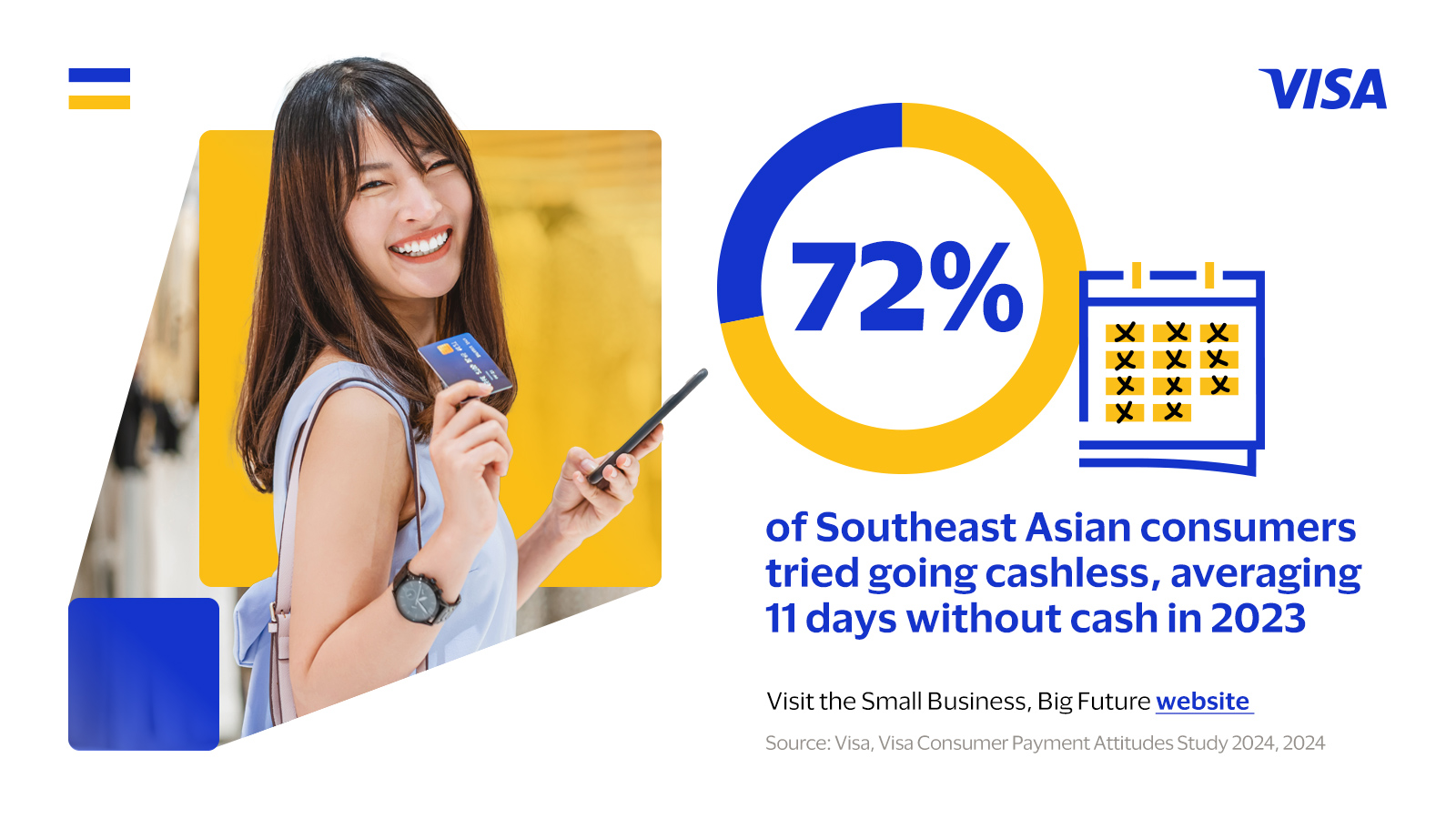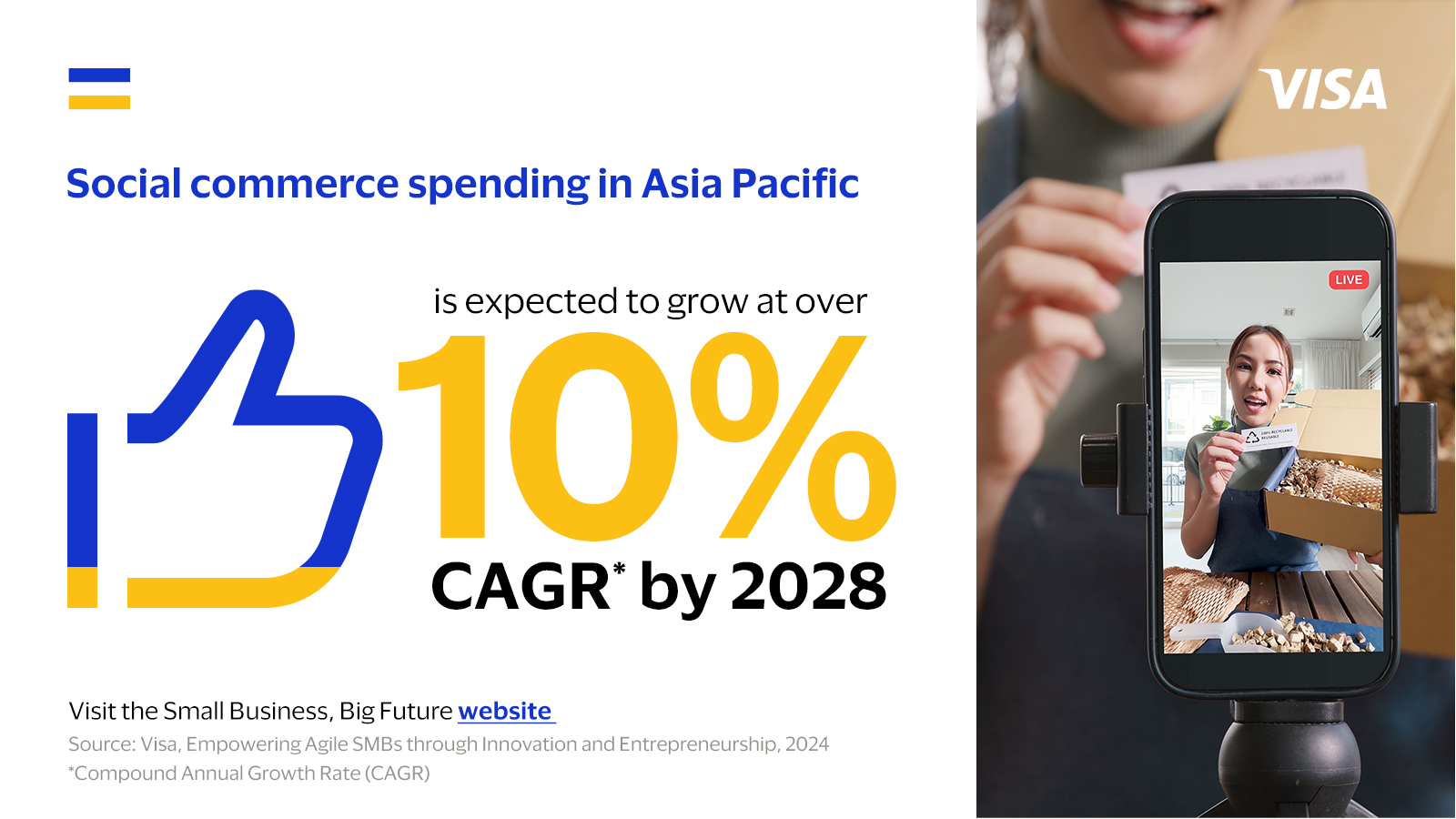How the financial ecosystem can modernise payments for SMBs today

Small and medium-sized businesses (SMBs) in the Asia Pacific region are becoming more agile to keep pace with change. Some major shifts are changing consumer payment expectations and digital commerce, fuelling a growing presence of content creators and gig workers.
Consumers today are moving towards cashless transactions at an accelerated rate. Across Southeast Asia, 72 per cent of consumers have attempted to go cashless, with some managing an average of 11 days without using cash in 2023.¹ Their spending habits are also becoming more digital, with 45 per cent of Asia Pacific consumers comfortable shopping both online and in physical stores, while 31 per cent prefer to make most purchases online.² Only 24 per cent still favour physical retail.³


The need for agile payments today
To remain competitive in today's digital landscape, SMBs need to adopt flexible payment methods. However, they face significant challenges, including outdated payment systems, limited resources to manage complexity, and difficulties with cross-border transactions.
One of the primary challenges is the significant difficulty SMBs, content creators, and gig workers encounter in receiving timely payments. Outdated payment methods, like cash or traditional point-of-sale systems, are frequently inadequate, causing consumers to hesitate when considering purchases from SMBs. Inefficient payment processes often lead to delays, which can severely impact financial stability. Moreover, legacy payroll systems prove to be too rigid for the unique needs of content creators and gig workers. The fixed payment cycles and high transaction fees associated with these systems fail to accommodate the fast, frequent payment demands of these micro-SMBs, disrupting their cash flow and limiting their ability to take on new projects.
In addition to these payment processing challenges, SMBs struggle with the complexities of setting up and managing payment acceptance across various business environments, including physical stores and online marketplaces. With limited resources, they often lack the manpower and finances needed to navigate the intricacies of payment processing, hardware requirements, and security measures. Additionally, the acceptance of new payment methods varies widely across regions, making it difficult for SMBs to adopt a one-size-fits-all approach. For example, while digital wallets are widely embraced in China, cash and cards remain the dominant payment methods in Japan. Additionally, resistance to adopting new digital payment solutions persists in certain markets, further complicating the landscape.
For SMBs looking to expand overseas, the challenges multiply when it comes to payments in different markets. The payment landscape in the Asia Pacific region is particularly diverse, requiring thorough research to understand the unique characteristics of each market. SMBs must navigate a complex web of currencies, languages, and regulatory environments across various countries. This daunting task often proves overwhelming for SMBs, especially micro-SMBs, which typically lack the expertise required to successfully manage these issues.
Rethinking payment methods within the financial ecosystem
To address these challenges, it is critical for the financial ecosystem to work together to innovate and drive new payment solutions that enhance SMB agility.
Issuers and acquirers can enhance payment processes by collaborating with payment networks to provide faster solutions for SMBs, content creators, and gig workers. Financial institutions such as banks can integrate solutions from payment networks, like Visa Direct, into their services to offer SMBs real-time payment capabilities.⁵ The solution ensures that payments are processed quickly, which is crucial for improving cash flow for SMBs and micro-SMBs that often rely on timely payments to manage their operations effectively. For instance, Visa Direct allows for instant transfers to debit cards, making funds available within minutes after approval, thus enhancing liquidity for businesses that require immediate access to their earnings.
To empower SMBs with payment acceptance in various settings, financial institutions, fintechs, and payment networks can offer significant support. By integrating payment solutions for both physical stores and online environments, these organisations help SMBs navigate the complexities of accepting payments. For example, banks and payment networks can offer Visa’s Tap to Everything suite to help SMBs accept payments in multiple scenarios.⁶ The Tap to Phone solution allows SMBs to use mobile devices as point-of-sale terminals, facilitating in-person transactions without the need for additional equipment. Additionally, the suite’s Tap to Confirm solution verifies digital identities during online transactions, ensuring safer payments.
Financial institutions can also work with governments to enhance cross-border payments. There are several innovative initiatives across the region, including developing interoperable payment systems that connect national platforms. Participating banks and regulators in Southeast Asia are leading efforts to connect national real-time payment systems. For example, Singapore's PayNow has been linked with Thailand's PromptPay, allowing real-time cross-border money transfers using just mobile numbers.⁷ Continued efforts between governments and banks will pave the way for standardised practices, allowing SMBs to transact across borders and grow their business seamlessly.
With the advance of digital commerce, the financial ecosystem must help SMBs stay agile with the right kind of payment services. Players like issuers, payment networks, and fintechs provide the necessary infrastructure and collaboration opportunities for SMBs to leverage advanced payment solutions. SMBs must embrace the financial ecosystem's potential to thrive in the rapidly changing digital landscape, ensuring they can grow their business and sustain their competitive edge.
1 Visa, Visa Consumer Payment Attitudes Study 2024, 2024.
² KPMG and GS1, Navigating the Future of Seamless Commerce in Asia Pacific, 2024.
³ KPMG and GS1, Navigating the Future of Seamless Commerce in Asia Pacific, 2024.
⁴ Visa, Empowering Agile SMBs through Innovation and Entrepreneurship, 2024.
⁵ Visa, Visa Direct, helping transform global money movement, accessed Aug 2024.
⁶ Visa, Visa reinvents the card, unveils new products for digital age, 2024.
⁷ The Straits Times, PayNow links up with Thailand's PromptPay in a world first for cross-border fast payments, 2021.